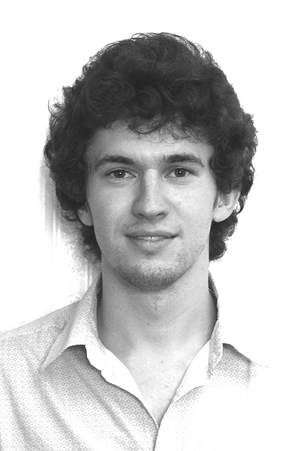Adaptive Physical Culture in the System of Socialization of Young Persons with Spinal Cord Injuries Who Use Wheelchairs
Фотографии:
ˑ:
A.V. Rubtsov
Russian state university of physical culture, sport, youth and tourism (SCOLIPhC), Moscow
Key words: social adaptation, adaptive physical activity, spinal cord injury, motor abilities, motor disturbances.
Contemporary Russian society is being actively transformed during humanization and democratization that stipulates for the urgency of finding new organizational and methodological approaches to solving the problems of social adaptation of persons with health disabilities.
Physical culture and sport provide opportunities for human integral biosocial self-fulfillment, regardless of the level of motor limitations, enabling better understanding of motor ability and its social role as a factor in the formation of progressive socio-cultural policy in relation to different groups of the population of our country.
Creating the necessary conditions for free social functioning and movement of these population groups, and especially persons with spinal cord injuries, using a wheelchair, is one of the main components of their normal social adaptation and integration. Adaptive physical culture (APC) and sport for handicapped people with spinal cord injuries is the most attractive form of social integration.
The relevance of the problem is determined by the lack of researches of the relationship of the level of motor limitations that define abilities to self-service and functional independence, and the level of social adaptation of the persons with spinal cord injuries and understudied efficiency of using means of adaptive culture in the system of social adaptation of this category of handicapped people.
The search for the ways of optimization of integration of the handicapped stipulates for the relevance of defining innovative methodological approaches to the theory and practice of their social adaptation and integration via adaptive physical culture (APC).
The purpose of the study was scientific substantiation and experimental proof of efficiency of using means of APC, intended to raise social adaptation of the young handicapped with spinal cord injuries who use wheelchairs.
Organization and methods. 20 handicapped students with spinal cord injuries, who use wheelchairs, were involved in our study. The age of subjects ranged from 20 to 27 years. The prescription of traumatic spinal cord injury was not less than 7 years. All subjects had the I degree of disability according to the classification of MSEB in the basic disease (traumatic disease of spinal cord) and various associated diseases.
A range of methods and technologies that provide the comprehensive information about the psychophysical and psychological-pedagogical condition of young handicapped persons with spinal cord injuries who use wheelchairs, their dynamics during the educational experiment was used in the study.
According to the ascertaining experiment, motor disturbances of persons with spinal cord injuries are not limited only by the lack of ability to walk without the use of aids. Impaired function of postural tonic muscles, reflected in the inability to maintain the vertical position of the body without extra support, significantly limits motor abilities of the upper extremities, complicates self-service, development of new motor skills, reduces the level of social activity, which leads to a significant deterioration of the quality of life of the examined contingent and limited opportunity of social adaptation.
Within the ascertaining study among other methods we have developed and applied in practice the method for estimating the index of social adaptation.
Based on the analysis of literary sources and the findings of the ascertaining experiment, we have developed a comprehensive program of social adaptation of young handicapped persons with spinal cord injuries by means of APC.
The experimental program consisted of three main stages:
– restoration of function postural tonic muscles;
– formation of adequate motor base and functionalities;
– raising the level of social activity;
Classes according to the experimental program were conducted three times a week for half an hour in the form of lessons. The class consisted of four parts.
The teaching conditions and organizational-methodological features of using means of APC in the process of social adaptation of young handicapped persons with spinal cord injuries, who use wheelchairs, were determined within the experimental program.
Results and discussion. The comparison of morphofunctional indices (Tab. 1) in the experimental group (EG) compared to the control one (CG) after the experiment promoted significant improvement of the following characteristics:
– vital capacity, along with the use of a large amount of aerobic exercises and a variety of breathing exercises in the year cycle of the experimental program;
– indicators of the heart rate variability study show the significant improvement of mechanisms of heart work regulation after the educational experiment in EG (6 points respectively by the PARS scale (Program Assessment Rating Scale) before the experiment and 4 after);
– endurance factor reflecting the level of body’s response to load (after the experiment, respectively, 39,19 in CG and 29,51 - in EG).
Table 1. Comparison of indices of morphofunctional development in EG (n=10) and CG (n=10) after experiment
|
Index |
EG |
CG |
U |
||||
|
Ме |
25% |
75% |
Ме |
25% |
75% |
||
|
Height, cm |
171 |
165,3 |
173,8 |
175 |
165 |
184 |
40 |
|
Body weight, kg |
64,5 |
53 |
68,5 |
65,5 |
49 |
77 |
44,5 |
|
CE, cm |
5 |
4 |
6 |
2,25 |
1,5 |
3 |
2* |
|
VC, ml |
4100 |
3200 |
4800 |
3200 |
2500 |
3775 |
22,5* |
|
Varicard, c.u. |
4 |
2,75 |
5 |
7 |
6 |
8 |
1,5* |
Note. Here and in Tab. 2-5: * – results are significant.
As a result of the experimental program physical fitness level (Tab. 2) of subjects also underwent significant changes in most indices:
- the time of passing a sprint distance on a wheelchair has improved significantly, which characterizes speed-strength abilities;
Table 2. Comparison of the indices of physical fitness level in EG (n=10) and CG (n=10) after experiment
|
Index |
EG |
CG |
U |
||||
|
Ме |
25% |
75% |
Ме |
25% |
75% |
||
|
Hand-held dynamometry, kg |
43,65 |
37,78 |
61,3 |
37,5 |
35,13 |
60,88 |
37,5 |
|
Wheelchair sprint, s |
17,60 |
15,47 |
19,52 |
20,78 |
18,83 |
24,78 |
18* |
|
Medicine ball throw, m |
5,75 |
5 |
6,325 |
4,15 |
3,475 |
4,65 |
9,5* |
|
Cooper’s test, m |
1920 |
1753 |
2160 |
1545 |
1200 |
1663 |
8,5* |
– during the modified Cooper's test after the educational experiment in EG a significant increase in the length of the distance traveled was found in the experimental group: the length of the distance cleared in a wheelchair has increased almost to the level "above average", or comprised 4 points on the 5th scale;
– the resulting experiment revealed a significant increase in speed and strength indices of the upper limbs and body, measured by the distance of the medicine ball throw.
The genesis of motor profile indices (Tab. 3) of handicapped persons with spinal cord injuries was identified, resulting in the educational experiment using means of APC, which is characterized by the following positions:
– when testing the support ability within the resulting research, except for the significant improvement of the mean value, the decrease in intra-group variability indicators of support ability in EG due to the actual lack of zero indicators should be noted, which is almost one-third within the ascertaining research;
– the test of fine motor skills during the resulting research has found significant differences between CG and EG in favor of the experimental one, the greatest troubles were still caused by the "Marathon" test, but the majority of subjects began to do it without direct vision.
Table 3. Comparison of indices of motor profile in EG (n=10) and CG (n=10) after experiment
|
Index |
EG |
CG |
U |
||||
|
Ме |
25% |
75% |
Ме |
25% |
75% |
||
|
Support ability, s |
12,6 |
6 |
15,63 |
6 |
0 |
7,5 |
17,5* |
|
Fine motor skills, points |
2,75 |
2,188 |
3,313 |
2 |
0,875 |
2,563 |
21,5* |
Together with a significant improvement of the index of social adaptation (Tab. 4) within the resulting study, a significant increase in the strength of the correlation between the number of indicators characterizing motor abilities and the index of social adaptation was detected, which confirms our assumption about the relationship of the level of motor disturbances with the level of social integration of persons with spinal cord injuries, who use wheelchairs.
Table 4. Indices of the level of social adaptation in EG (n=10) and CG (n=10) after experiment
|
Index |
EG |
CG |
U |
||||
|
Ме |
25% |
75% |
Ме |
25% |
75% |
||
|
Index of social adaptation, points |
6,18 |
4,395 |
7,05 |
3,585 |
3,16 |
4,303 |
7* |
A positive dynamics of psychoemotional state was noted in EG in the resulting study (Tab. 5). The differences in the “Quality of life” index in CG and EG after the educational experiment are significant in compliance with the Mann-Whitney test in favor of EG.
Table 5. Comparison of the “Quality of life” index in EG (n=10) and CG (n=10) after experiment
|
Index |
EG |
CG |
U |
||||
|
Ме |
25% |
75% |
Ме |
25% |
75% |
||
|
Quality of life, points |
6,1 |
5,975 |
6,45 |
5,6 |
5,5 |
6,05 |
19* |
The study of correlations (Fig.) between the indicators of various manifestations of motor abilities of persons with spinal cord injuries, who use wheelchairs, as a part of the ascertaining and the resulting studies indicate the importance of the level of development of postural tonic muscle function, manifested in the support ability index as the main factor determining the motor profile of the tested group.
 Fig. 1. Correlation pleiad – EG after experiment:
Fig. 1. Correlation pleiad – EG after experiment:
1 – social adaptation index; 2 – chest excursion; 3 – vital capacity; 4 – response to load; 5 – Hand-held dynamometry; 6 – wheelchair sprint; 7 – medicine ball throw; 8 – modified Cooper's test; 9 – Fine motor skills; 10 – quality of life; 11 – support ability.
Conclusion. The corrective measures and phased training of the young handicapped with spinal cord injuries who had graduated from the courses by the designed program based on the use of means of APC along with the increased total time of motor actions were proved to be effective for the functional status of the body of handicapped students with a traumatic spinal cord injury, provide the necessary recovery of the motor base, increase psychoemotional state, which significantly improves the quality of life, effectively improves the level of social adaptation, most fully settles the issues of social integration of the young handicapped with spinal cord injuries who use wheelchairs.
References
- Budaeva, G.S. Social adaptation of the handicapped with spinal cord injuries in the modern Russian society (Case study of the Republic of Buryatia): Ph.D. thesis. – Ulan-Ude, 2005. (In Russian)
- Dement’eva, N.F. Social rehabilitation and its role in the social integration of the handicapped / N.F Dement’eva et al. // Development of social rehabilitation in Russia. – Moscow, 2000. – P. 4-11. (In Russian)
- Kavokin, S.N. A disabled person and society (the organizational-legal aspect) / S.N. Kavokin // Kompleksnaya reabilitatsiya invalidov. – Iss. 1. – Moscow, 2002. (In Russian)
Author’s contacts: fireball06@mail.ru




 Журнал "THEORY AND PRACTICE
Журнал "THEORY AND PRACTICE